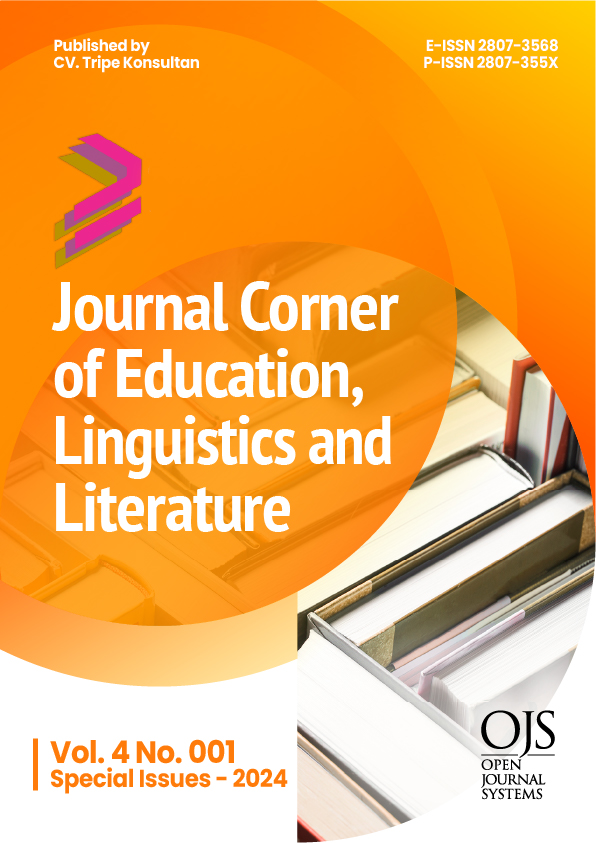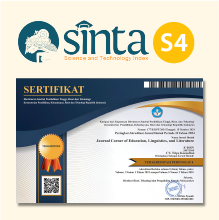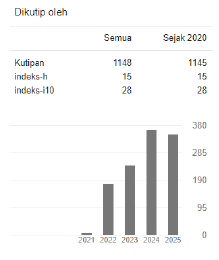An Analysis of Numeracy Skills in The Education Report of SDN 184 Pekanbaru
 https://doi.org/10.54012/jcell.v4i001.508
https://doi.org/10.54012/jcell.v4i001.508
 Abstract views: 23
Abstract views: 23
 PDF downloads: 31
PDF downloads: 31
Keywords:
Numeracy, Education Report, SDN 184 PekanbaruAbstract
This study examines the gap between numeracy scores presented in the national Education Report and the actual assessment results of students at SDN 184 Pekanbaru. The primary objective of this research is to analyze the extent to which macro-level national data aligns with the actual numeracy achievements of students in the classroom. The research subjects consisted of 20 fifth-grade students selected using purposive sampling techniques based on the diversity of their academic achievements. This study employed a qualitative descriptive approach with data collection methods including the analysis of the 2025 Education Report document and field-based numeracy assessments developed to measure students’ numeracy competencies. The numeracy domains analyzed include number, algebra, geometry, as well as data and uncertainty. The findings revealed that the numeracy score in the Education Report was 53.33%, generally indicating the attainment of minimum competency. However, the students' actual assessment results showed an average score of only 46.70%, indicating a performance gap. Students tended to perform better in the number and geometry domains but faced significant challenges in algebraic reasoning and data interpretation. These findings underscore the importance of cross-verifying national report data with classroom assessments to obtain a more comprehensive understanding of learning outcomes. The study recommends that schools conduct regular and contextual evaluations of numeracy learning and implement teaching strategies better aligned with students’ cognitive readiness and real-life experiences. The results offer practical implications for instructional planning, learning design, and the implementation of targeted numeracy interventions in primary school environments.
Downloads
References
Ahmad, R., & Sari, D. (2022). Analisis hasil Asesmen Nasional dalam meningkatkan mutu pendidikan di sekolah dasar. Jurnal Evaluasi Pendidikan, 13(1), 45–56. https://doi.org/10.21831/jep.v13i1.45678
Akbar, S., & Rahman, T. (2021). Contextual teaching and learning untuk meningkatkan kemampuan numerasi siswa SD. Jurnal Pendidikan Dasar Indonesia, 6(2), 98–110. https://doi.org/10.23887/jpdi.v6i2.35679
Burgess, R. (2019). Rethinking global health: Frameworks of power. Routledge.
Hasibuan, M., & Petege, Y. (2024). Analisis kesulitan siswa dalam menyelesaikan soal numerasi berbasis Asesmen Nasional. Jurnal Pendidikan Matematika Indonesia, 9(1), 25–37. https://doi.org/10.15294/jpmi.v9i1.62345
Hidayati, N., & Sari, M. (2023). Pengaruh pembelajaran berbasis masalah terhadap kemampuan numerasi siswa SD. Jurnal Pendidikan Matematika, 17(3), 211–222. https://doi.org/10.33369/jpm.v17i3.54321
Kemdikbudristek. (2022). Rapor Pendidikan: Panduan Implementasi di Satuan Pendidikan. Kementerian Pendidikan, Kebudayaan, Riset, dan Teknologi. https://raporpendidikan.kemdikbud.go.id
Kemdikbudristek. (2024). Laporan capaian numerasi nasional tahun 2024. Kementerian Pendidikan, Kebudayaan, Riset, dan Teknologi. https://pusmendik.kemdikbud.go.id
Kiriana, D., & Widiasih, E. (2023). Validasi data rapor pendidikan melalui asesmen formatif di sekolah dasar. Jurnal Penelitian Pendidikan, 24(2), 134–146. https://doi.org/10.17509/jpp.v24i2.56789
Kurniawan, A., & Syamsudin, S. (2022). Implementasi perencanaan berbasis data pada rapor pendidikan. Jurnal Manajemen Pendidikan, 34(1), 77–89. https://doi.org/10.26877/jmp.v34i1.56789
OECD. (2019). PISA 2018 results (Volume I): What students know and can do. OECD Publishing. https://doi.org/10.1787/5f07c754-en
Permatasari, D., & Nurhidayah, R. (2021). Faktor-faktor yang mempengaruhi capaian numerasi siswa sekolah dasar. Jurnal Ilmiah Pendidikan Dasar, 8(1), 59–70. https://doi.org/10.21009/jipd.v8i1.23456
Pratiwi, S., & Sariyasa, S. (2022). Pengembangan instrumen asesmen numerasi berbasis konteks lokal. Jurnal Pendidikan Matematika dan Sains, 10(2), 102–114. https://doi.org/10.15294/jpms.v10i2.54321
Putri, R. I. I., & Zulkardi. (2020). Numeracy skills and mathematical literacy in Indonesian elementary schools. Journal on Mathematics Education, 11(2), 157–170. https://doi.org/10.22342/jme.11.2.10710.157-170
Saditya, R. (2022). Kepemimpinan kepala sekolah dalam meningkatkan literasi dan numerasi di sekolah dasar. Jurnal Administrasi Pendidikan, 29(2), 115–123. https://doi.org/10.21009/jap.292.10
Sari, A. P., & Wulandari, N. (2021). Strategi pembelajaran numerasi berbasis data asesmen nasional. Jurnal Inovasi Pendidikan Dasar, 7(3), 145–156. https://doi.org/10.21009/jipd.v7i3.34567
Sulastri, E., & Sodiyah, N. (2022). Analisis capaian literasi dan numerasi berdasarkan hasil Asesmen Nasional. Jurnal Pendidikan dan Kebudayaan, 27(4), 311–324. https://doi.org/10.24832/jpnk.v27i4.56789
Syamsuddin, M., & Harianto, D. (2023). Rapor Pendidikan: Inovasi evaluasi mutu berbasis data di Indonesia. Jurnal Kebijakan dan Manajemen Pendidikan, 11(1), 23–35. https://doi.org/10.21009/jkmp.v11i1.12345
Widianti, N., Suparta, I. N., & Sariyasa, S. (2022). Tantangan pembelajaran numerasi di sekolah dasar: Studi kasus di Bali. Jurnal Pendidikan Dasar Indonesia, 7(2), 89–101. https://doi.org/10.23887/jpdi.v7i2.45678
Yuliana, R., & Prasetyo, Z. K. (2020). Pengaruh literasi numerasi terhadap hasil belajar matematika siswa. Jurnal Pendidikan Matematika, 14(2), 67–78. https://doi.org/10.22342/jpm.14.2.7890.67-78
Zulkardi, & Putri, R. I. I. (2021). The role of context in numeracy learning for Indonesian students. Journal of Physics: Conference Series, 1836(1), 012039. https://doi.org/10.1088/1742-6596/1836/1/012039
Downloads
Published
How to Cite
Issue
Section
License
Copyright (c) 2024 Khofifah Aznel, Makhdalena , Daeng Ayub Natuna

This work is licensed under a Creative Commons Attribution-ShareAlike 4.0 International License.
All articles published in the Journal Corner of Education, Linguistics, and Literature are licensed under the Creative Commons Attribution-ShareAlike License (CC BY-SA).

















